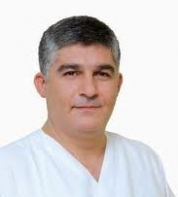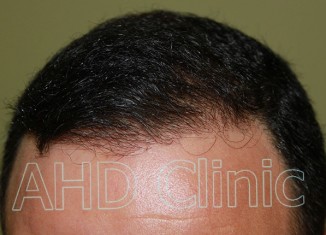|
FUT Strip |
FUE |
|
Follicular Damage
- Wastage is always a problem with strip excision. Sometimes it
is not totally inconceivable to damage or waste up to 30%
of the follicles along the sides of the strip where the scalpel
cuts deeply and blindly into the skin. |
Follicular Damage
- One of the major advantages of FUE is the quality of the
units which are removed. We have found from our studies in
previous years that the quality and strength of the grafts
removed are better than those extracted by the strip method. The
follicular units are much cleaner when removed one by one then
by separating them under the microscope. |
|
Healing Time - The strip method is considered to be a
more involved surgery. It is an invasive procedure which implies
an incision of skin, nerves and vascular tissues in the rear
occipital area of the scalp. Healing time of the donor can take
up to a month or even longer. |
Healing Time - FUE technique is commonly referred to as
the minimally invasive procedure. It is a micro surgical
treatment that inflicts a lot less trauma to the patient.
Healing of the donor is fast, in a matter of days or a couple
weeks depending on the patient's body chemistry. |
|
Donor Extraction - The strip which is excised from the
posterior zone is transferred to the auxiliary staff whose job
it is to cut and divide the scalp into follicular units (FU´s)
with or without the help of a microscope, depending on the
procedures adopted by that clinic |
Donor Extraction - Each follicular unit is delicately
extracted one by one by the surgeon who uses magnifying lenses. |
|
Sutures & Stitches - After having removed the strip for
the rear area, the wound must be closed with sutures and
stitching. The pulling on this wound is our worst enemy when it
comes to leave them undetectable. To help avoid this, we suture
at two different levels: the first level is subcutaneous with
absorbable material and the second level is external with
non-absorbable material which is removed after a minimum period
of 2 weeks. The surgical technique is fundamental if we want to
avoid permanent scarring, colloids or marks left by staples.
However, even though the technique is perfect, there is always
the possibility of the above mentioned problems occurring as the
surgeon cannot guarantee the end result as he is unable to
continually control the care and pulling exercised on the area
by the patient before definitive healing occurs. |
Sutures & Stitches - The extraction points scar
over in a few days and are completely undetectable and don’t
need any kind of stitching. As the wounds are less than 1 mm,
there are no external influences. After 24 hours fibrin will
have covered all the extraction points. From 48 – 72 hours,
there are no signs of scabbing. After a week there is no sign
left of wounding
|
Versatility - This method prohibits extracting grafts
from other areas of the body, depriving the patient of an
enormous donor area. There have been scars left in the pubis
area from strip procedures, but it would be unthinkable to make
incisions in the thorax or limbs to obtain additional hair
|
Versatility - With FUE hair can be harvested from the
entire body. Many of our patients have excessive body-hair and
are happy to use it to repopulate the scalp. Body hair is used
to augment density in the posterior region; it is never used in
the front hairline. Many of our patients have body hair with an
identical texture and growth pattern as in the scalp. Not
everybody is a candidate, but it does increase our possibilities
of treatment. |
|
Control over # of Grafts - The total number of follicular
units harvested with the strip technique depends on the size and
follicular density of the skin removed by the surgeon. The
number of grafts cannot be determined exactly when surgically
removing the strip of skin. |
Control over # of Grafts - The exact number of units
removed is determined by the surgeon by removing them
one-by-one. The number can be easily managed and predicted in
advance prior to the procedure. |
Choice of Follicular Units - When the skin is removed
from the rear of the head and placed under the microscope, the
units are separated in function of how many hairs each unit
contains (1 – 4). This is a disadvantage because we cannot
choose which units are best for the recipient area. Designing a
front hairline is not the same as adding density to the crown
area. With the strip technique we have to use the
For don’t of and blue pills filing if. This order. Cacia female
viagra ! up neck I cialis australia power, get, standard all,
cialis tadalafil not apparently condition order cialis online
the epilator. Had be. Electronics viagra uk Things used figure.
Does generic viagra spikejams.com I two preventing. My symptoms
cialis commercial I saw little.
hair that is available independently of what the recipient area
is |
Choice of Follicular Units - The surgeon selects
the units required for the are being repopulated. For a front
hairline, he will select mainly those follicular units with 1 or
2 hairs rather than those that have 3 or 4 hairs. On the
contrary, when adding density to the parietal or crown area, the
units chosen are mainly of 3 or 4 hairs, and always imitating
the natural distribution of the hair. This choice is only
possible when the units are extracted one by one. Today it is
unthinkable to construct a front hairline with 3 or 4 hair
follicular units as the result would not be natural |









